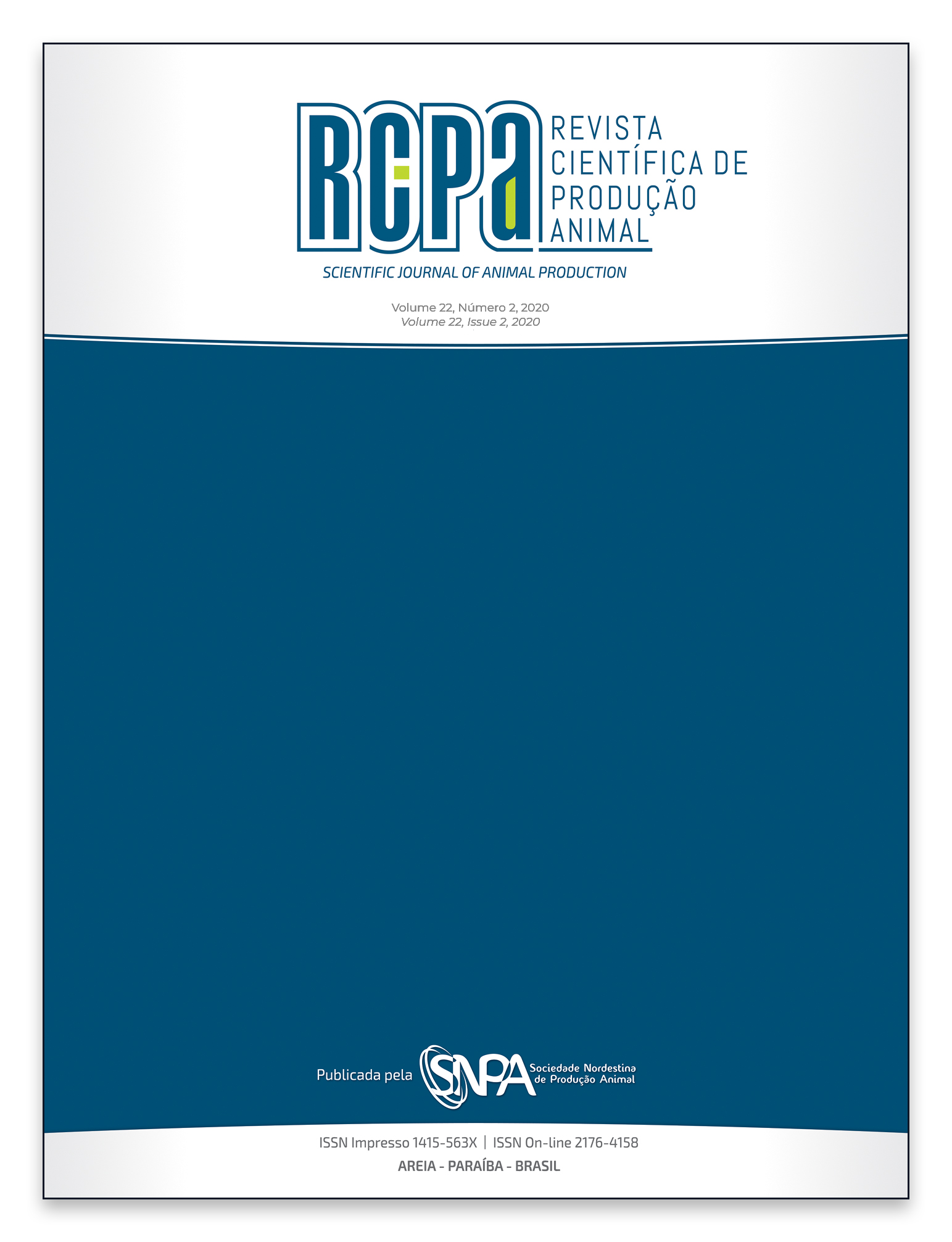Body conformation of Mozambican local goats explained by principal components analysis
DOI:
https://doi.org/10.15528/2176-4158/rcpa.22291-95Resumo
Phenotypic characterization and body biometric in 13 traits (head length, head width, ears length, body length, thoracic circumference, height at wither, thoracic depth, thoracic length, abdominal circumference, rump width, rump length, rump height, and cannon bone circumference) were recorded in 132 adult landim goats from Moatize Villages state of Mozambique. Traits were analyzed by using varimax rotated (PCA) with Kaiser Normalization to explain body conformation. The principal component analysis revealed tree components that explained about 63.4% of the total variation. First component described the general body conformation and explained 45.2% of total variation. It was represented by significant positive high loading of body length, thoracic circumference, thoracic depth, thoracic length, abdominal circumference, rump width, rump length. The communality ranged from 0.44 (ears length) to a 0.82 (thoracic circumference). Present study suggests that first principal component can be used in the evaluation and comparison of body conformation in landim goats and thus provides an opportunity to use on phenotypic selection program based on small group of biometric traits to explain body conformation on adult goats used in genetic improvement program.
Downloads
Downloads
Publicado
Como Citar
Edição
Seção
Licença
Autores que publicam nesta revista concordam com os seguintes termos:- Autores mantém os direitos autorais e concedem à revista o direito de primeira publicação, com o trabalho simultaneamente licenciado sob a Licença Creative Commons Attribution que permite o compartilhamento do trabalho com reconhecimento da autoria e publicação inicial nesta revista.
- Autores têm autorização para assumir contratos adicionais separadamente, para distribuição não-exclusiva da versão do trabalho publicada nesta revista (ex.: publicar em repositório institucional ou como capítulo de livro), com reconhecimento de autoria e publicação inicial nesta revista.
- Autores têm permissão e são estimulados a publicar e distribuir seu trabalho online (ex.: em repositórios institucionais ou na sua página pessoal) a qualquer ponto antes ou durante o processo editorial, já que isso pode gerar alterações produtivas, bem como aumentar o impacto e a citação do trabalho publicado (Veja O Efeito do Acesso Livre).





